The U.S. drone program has seen significant press since the first Gulf War when the defenders of Faylaka Island surrendered to the Pioneer drone, or Unmanned Aerial Vehicle (UAV), flying spotting services for the USS Wisconsin (BB 64). Since that time, the technology powering U.S. drones has steadily improved now allowing the MQ-1B Predator and MQ-9 Reaper to conduct surgical strikes in addition to Intelligence, Surveillance, and Reconnaissance (ISR) missions. Other common U.S. drones being flown by the U.S. military and government include the RQ-4 Global Hawk, MQ-8 Fire Scout, Scan Eagle, and the RQ-170 Sentinel.
Common U.S. Drones
MQ-1B Predator
The MQ-1B Predator was previously designated as the RQ-1 when the only mission of the aircraft was to support ISR (Intelligence, Surveillance, and
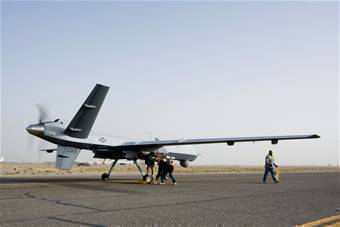
Aircrews perform a preflight check on an MQ-9 Reaper before it takes off on a mission in Afghanistan Oct. 1. The Reaper is larger and more heavily-armed than the MQ-1 Predator and attacks time-sensitive targets with persistence and precision, to destroy or disable those targets. (Courtesy USAF photo)
Reconnaissance). Since 2002, the drone has been equipped with the capability to carry and shoot two AGM-114 Hellfire II missiles (8 km / 5 mile) range. The Predator is primarily operated by the U.S, Central Intelligence Agency (CIA) and the United States Air Force (USAF). The Predator is driven by propeller with a Rotax engine and has a range of 400 nautical miles (740 km) to a pre-designated target with a 14 hour loiter time. The Predator has seen combat operations in: Afghanistan, Bosnia, Serbia, Pakistan, Iraq, Yemen, Libya, and Somalia.
MQ-1B Predator Drone Characteristics:
Length: 27 ft (8.22 m)
Wingspan: 48.7 ft (14.8 m); MQ-1B Block 10/15: 55.25 ft (16.84 m)
Height: 6.9 ft (2.1 m)
Wing area: 123.3 sq ft(11.5 m²)
Empty weight: 1,130 lb (512 kg)
Loaded weight: 2,250 lb (1,020 kg)
Max. takeoff weight: 2,250 lb (1,020 kg)
Powerplant: 1 × Rotax 914F turbocharged four-cylinder engine, 115 hp (86 kW)
MQ-1B Performance Ratings
Maximum speed: 135 mph (117 knots, 217 km/h)
Cruise speed: 81–103 mph (70–90 knots, 130–165 km/h)
Stall speed: 62 mph (54 knots, 100 km/h) (depends on the aircraft rate.
Range: 675 NM (675 mi/1,100 km)
Endurance: 24 hours
Service ceiling: 25,000 ft (7,620 m)
MQ-1B Predator Weapons
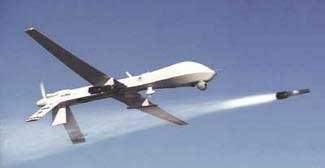
Armed Predator drone firing Hellfire missile. Photo by: Brigadier Lance Mans, Deputy Director, NATO Special Operations Coordination Centre
2 x hardpoints to carry weapons
2 × AGM-114 Hellfire (MQ-1B) or
4 × AIM-92 Stinger (MQ-1B) or
6 × Griffin air-to-surface missiles
MQ-1B Predator Avionics
ASIP-1C
AN/AAS-52 Multi-Spectral Targeting System
AN/ZPQ-1 Synthetic Aperture Radar (early airframes only)
MQ-9 Reaper
The MQ-9 Reaper first flew in early 2001 and was introduced into service in mid-2007. Unlike the Predator, the Reaper drone was designed to be a “hunter-killer” system from the start. The Reaper features a faster cruise speed of 230 mph (370 km/hr) making it a bit less vulnerable to being shot down at lower altitudes. It can carry laser-guided bombs and up to four Hellfire missiles packing a larger overall punch compared to the Predator (15 x more ordnance). The Predator was acquired to be used by the U.S. Navy, USAF, CIA, the Royal Air Force, Italian Air Force, and the U.S. Customs and Border Protection Agency. It can be controlled by the same ground control system the Predator uses and is the first “Hunter-Killer” UAV made to fly long-endurance, high altitude surveillance missions. The Reaper has been publicly acknowledged as flying combat missions in Afghanistan and Somalia since it was introduced.
The New York Air National Guard 174th Fighter Wing started to transition from F-17 fighters to MQ-9 Reapers in 2008 to become the first fighter squadron to convert to all UCAV’s. A few year later (March 2011), the Air Force went on record as stating there were more pilots in training for UAV operations than any other system in the Air Force.
General MQ-9 Reaper Characteristics:
Landing Type: runway
Launch Type: runway
Length: 36 ft (11 m)
Wingspan: 66 ft (20 m)
Height: 12.5 ft (3.6 m)
Empty weight: 4,900 lb (2,223 kg)
Fuel Capacity: 4,000 lb (1,800 kg)
Max takeoff weight: 10,500 lb (4,760 kg)
Power Plant: Honeywell TPE331-10 turboprop engine, 900 shp (671 kW), with Digital Electronic Engine Control (DEEC)
MQ-9 Reaper Performance Specifications
Maximum speed: 260 knots (482 km/h, 300 mph)
Cruise speed: 150–170 knots (276–313 km/h, 172–195 mph)
Range: 1000 nautical miles (1850 km)
Endurance: 14–28 hours (14 hours fully loaded)
Payload: 3,800 lb (1,700 kg)
Internal: 800 lb (360 kg)
External: 3,000 lb (1,400 kg)
Service ceiling: 50,000 ft (15 km)
Operational altitude: 25,000 ft (7.5 km)
MQ-9 Reaper Sensors
AN/APY-8 Lynx II radar
Raytheon SeaVue Marine Search Radar, on the Guardian variants
AN/DAS-1 MTS-B Multi-Spectral Targeting System
MQ-9 Reaper Armament
7 x Weapons Hardpoints
Up to 1,500 lb (680 kg) on the two inboard weapons stations
Up to 750 lb (340 kg) on the two middle stations[
Up to 150 lb (68 kg) on the outboard stations
Center station not used
The Hardpoints on the Reaper can be used to support:
– Up to 14 x AGM-114 Hellfire missiles or
– 4 x Hellfire missiles and 2 x 500 lb GBU-12 Paveway II Laser Guided Bombs, or
– The Joint Direct Attack Munition (JDAM).
RQ-4 Global Hawk
The RQ-4 Global Hawk is a drone used by the USAF and USN. Unlike the MQ-1 and MQ-9, the Global Hawk is designed to provide systematic target surveillance. It is capable of providing high resolution Synthetic Aperture Radar (SAR) and Electro-Optical/Infrared (EO/IR) imager at long range and has extremely long loiter times. The aircraft is capable of surveying as much of 40,000 square miles of terrain in a day. The primary missions for the Global Hawk include full-scale ISR to support weapons targeting and force protection.
RQ-4 Global Hawk Specifications:
Length: 44 ft 5 in (13.54 m)
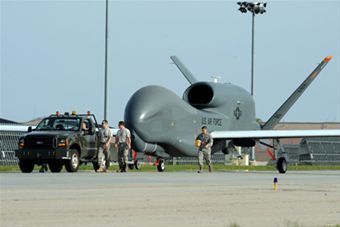
Airmen from Grand Forks Air Force Base, N.D., welcome the first RQ-4 Global Hawk to the base May 26, 2011. The arrival marked the beginning of a new era of remotely piloted aircraft at the base. (U.S. Air Force photo/Tech. Sgt. Johnny Saldivar)
Wingspan: 116 ft 2 in (35.41 m)
Height: 15 ft 2 in (4.62 m)
Empty weight: 8,490 lb (3,851 kg)
Gross weight: 22,900 lb (10,387 kg)
Powerplant: 1 × Allison Rolls-Royce AE3007H turbofan engine, 7,050 lbf (31.4 kN) thrust
Performance
Maximum speed: 497.1 mph (800 km/h)
Cruise speed: 404 mph (650 km/h)
Range: 15,525 mi (13,491 nm; 24,985 km)
Endurance: 36 hours
Service ceiling: 65,000 ft (19,812 m)
MQ-8 Fire Scout
The MQ-8 Fire Scout is the first unmanned autonomous helicopter to be operated from U.S. Navy ships at sea. It is designed to provide ISR for both ground and sea forces. The Fire Scout saw combat operations in Afghanistan and Libya in 2011. It is fitted with an electro-optical and infrared camera to include a laser range finder. The Fire Scout is rated at a range of 182 miles (280 km) using a line of sight control system that can be installed on a ship or carried on a Humvee.
MQ-8 Fire Scout Specifications:
Payload: 600 lb (272 kg)
Length: 23.95 ft (7.3 m)
Rotor diameter: 27.5 ft (8.4 m)
Height: 9.71 ft (2.9 m)
Empty weight: 2,073 lb (940.3 kg)
Max. takeoff weight: 3,150 lb (1,430 kg)
Powerplant: 1 × Rolls-Royce 250, 313 kW (420 hp)
MQ-8 Fire Scout Performance
Maximum speed: 115 knots (213 km/h)+
Cruise speed: 110 knots (200 km/h)
Combat radius: 110 nmi (203.7 km) plus 5+ hours on station
Endurance: 8 hours
Service ceiling: 20,000 ft (6,100 m)
Scan Eagle
The Scan Eagle drone is a low-cost, commercial Unmanned Aerial Vehicle (UAV). Originally designed to help fishermen find concentrations of fish, Scan Eagle has found wide-spread use as an ISR platform with the U.S. Navy since 2005. The aircraft can be flown with either an infrared or electro-optical camera mounted on an inertial stabilized turret system. Scan Eagle is capable of flying at speeds of 75 knots or 139 km/hr. The average cruise speed of the drone is 60 knots (111 km/hr).
Unlike the larger Predator and Reaper drones, Scan Eagle is launched with a pneumatic launcher. The aircraft is recovered using a hook on the end of the wingtip that catches a rope hanging from a 15 meter pole (called the Sky Hook retrieval system). As a result, the UAV can be deployed from mobile platforms such as ships and vehicles. Scan Eagle has seen combat service in Iraq, Afghanistan, and was used during the stand-off between pirates holding the MV Maersk Alabama’s lifeboat and the U.S. Navy in April of 2009.
Scan Eagle Characteristics
Primary Mission: ISR
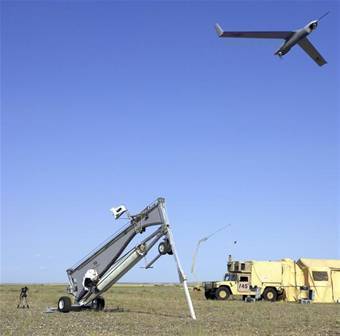
A Scan Eagle Unmanned Aerial System launches from a catapult. (U.S. Air Force photo)
Contractor: Boeing, Inc. and Insitu Group
Power Plant: 3W 2-stroke piston engine; 1.5 horsepower
Wingspan: 10.2 feet (3.1 meters)
Length: 3.9 feet (1.19 meters)
Weight: 39.7 lbs (18 kilograms)
Speed: 55-80 mph
Endurance: 20 + hours
Operating Altitude: 16,000 feet air ground level (4,876 meters)
Payload: High resolution, day/night camera and thermal imager
RQ-170 Sentinel
The RQ-170 Sentinel is one of the least discussed drones in the U.S. inventory. Developed by the Skunk Words Division of Lockheed Martin, the RQ-170 is a stealth UAV. Conjecture is the aircraft is primarily designed to be a tactical support platform and was first acknowledged to exist after being observed flying near Kandahar Airfield in 2009. The Sentinel is flown by the
Air Combat Command’s 432nd Wing at Creech Air Force Base, Nevada, and the 30th Reconnaissance Squadron at Tonopah Test Range, Nevada.
The Sentinel is also referred to as “The Beast of Kandahar” and has been confirmed to have operated over Pakistan and in support of the raid that resulted in Osama bin Laden’s death. More famously, Iranian forces displayed a captured Sentinel alleged to have been flying over their airspace.
RQ-170 Characteristics (Likely)
Length: 4.5 m (14 ft 9 in)
Wingspan: 12 m (39 ft 4 in) estimated
Height: 2 m (6 ft) estimated
Powerplant: 1 × Garrett TFE731 or General Electric TF34 turbofan
Performance
Service ceiling: 15,240 m (50,000 ft) (estimated)


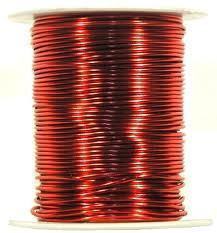
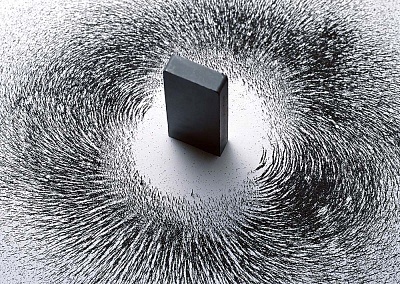
Follow Us!